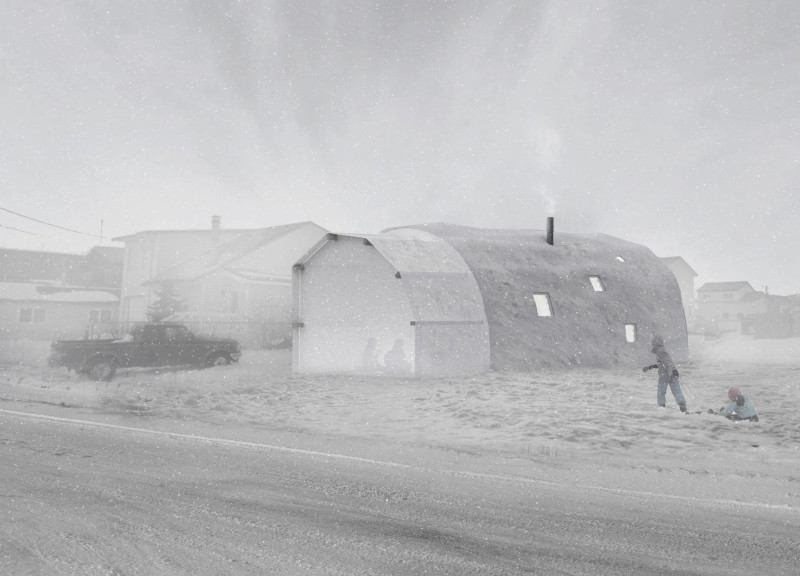5 key facts about this project
The project serves multiple functions, possibly acting as a mixed-use space that accommodates both residential and commercial activities. The layout is meticulously arranged to facilitate seamless flow between different areas, ensuring that each space is optimally utilized. By prioritizing user experience, the design emphasizes accessibility and comfort, which are key factors in contemporary architectural thought.
Key elements of the design include a façade that skillfully transitions between solid and void, creating a visually dynamic exterior that invites curiosity without compromising privacy. Large windows and strategically placed openings enhance natural light throughout the interior, which not only reduces reliance on artificial lighting but also creates a welcoming atmosphere. The architectural approach focuses on integrating indoor and outdoor experiences, evident in the incorporation of terraces and green spaces that foster a connection with nature.
Materiality plays a critical role in the project's identity. The selection of materials is carefully considered to reflect sustainability and locality. Utilitarian yet elegant finishes such as locally sourced stone, timber, and glass create a cohesive narrative throughout the building. These materials not only ground the architecture in its geographical location but also highlight a commitment to environmentally responsible practices. The texture and color palette complement the surrounding landscape, further embedding the structure within its setting.
Unique design approaches are evident in the careful attention to detail. For example, the roofline may feature a gentle slope, enhancing the building's integration with the skyline while allowing for effective rainwater management. The interior spaces can be characterized by an open-plan layout that fosters collaboration and social interaction, further promoting community engagement. Flexible room configurations provide versatility, accommodating various uses as the demands of its occupants evolve over time.
Through the careful orchestration of form, function, and material, this architectural project stands as a testament to thoughtful design. Its ability to adapt to the changing needs of its environment and users reflects a broader trend towards sustainable and resilient architecture. The interaction between space and material, and the intention behind each design choice, results in a multi-layered experience for all who engage with it.
Readers are encouraged to explore the project's presentation for more details. A comprehensive review of the architectural plans, sections, designs, and underlying architectural ideas will provide deeper insights into the intricate elements that make this project a significant addition to its context. Engaging with these materials can enhance understanding and appreciation for the craft of architecture and the thought processes behind such a well-executed design.























